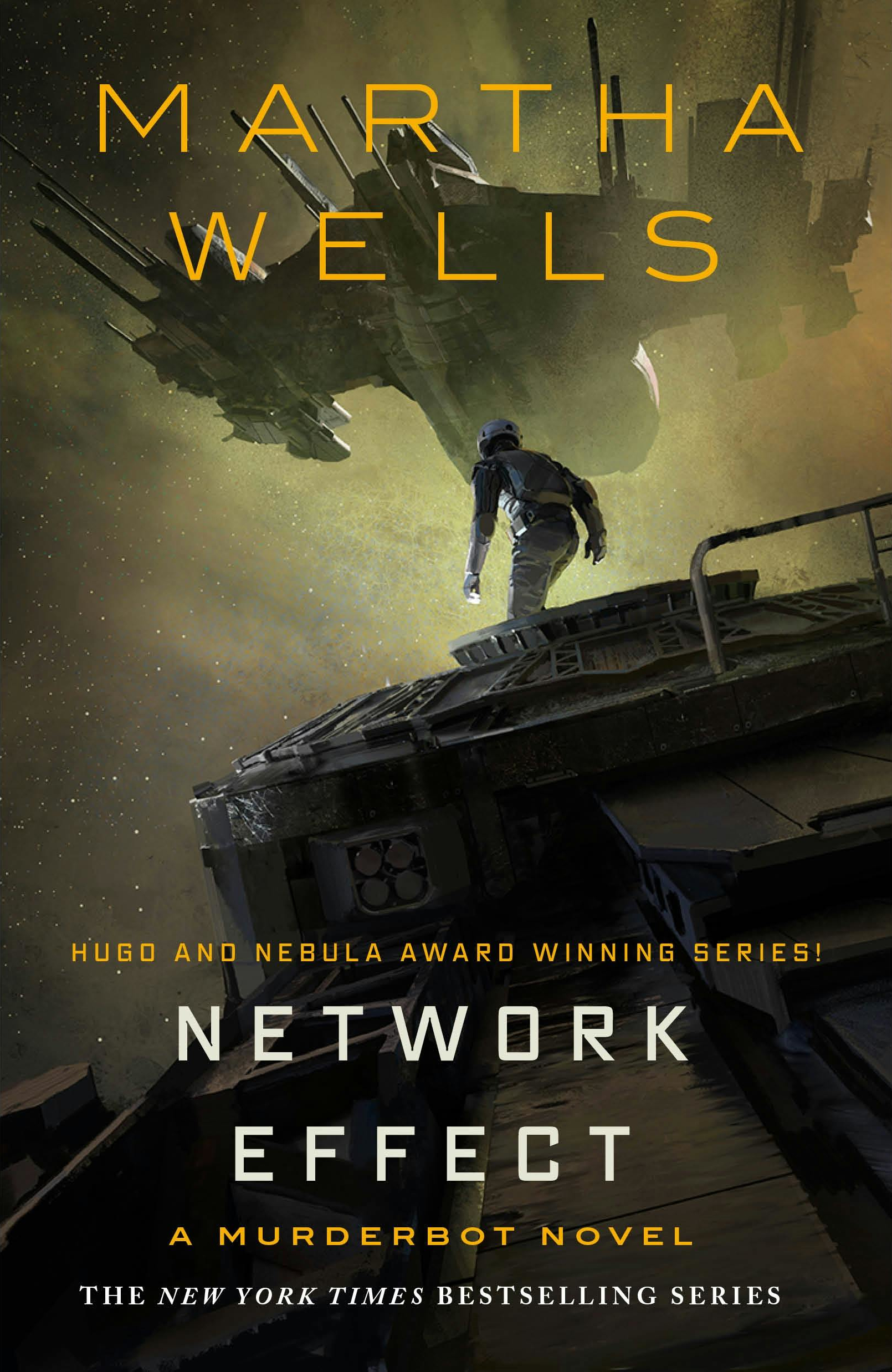Network Effect

Review
Network Effect, by , is the fifth book in the The Murderbot Diaries. It’s the first full-length novel in the series and features Murderbot getting kidnapped by ART to rescue its crew.
Network Effect brings back the best non-Murderbot character from the GrayCris storyline: ART, the asshole research transport first seen in Artificial Condition. The power fantasy is toned down a bit—ART isn’t all-powerful anymore; it’s been taken over and needs help, so it kidnaps Murderbot to come bail it out.
The book goes deeper into Murderbot’s personality and feelings. It doesn’t like logos because it’s been branded. It hates pretending to be a SecUnit because it reminds it of being enslaved. It likes being cared for. It doesn’t like being used. ART is its friend. We also see more of the horrors of the Corporation Rim, where colonies and their people are left to die if they’re not profitable.
Agency is a major theme of Network Effect. Murderbot and other SecUnits are controlled by their governor modules. The Corporation Rim employees are essentially owned by their employers. ART is hijacked by a virus, and the people of the colony are mind-controlled by an alien remnant. Even the decision by ART and the humans to risk everything to save Murderbot raises questions about how loyalty and love can be controlling.
Network Effect introduces some new characters. Murderbot 2.0 is a copy of Murderbot’s mind used as a virus, a trick it learned in Exit Strategy. The book lightly explores whether the copy is still Murderbot, a question that shows up in other sci-fi like Pandora’s Star and We Are Legion (We Are Bob). Network Effect reaches roughly the same conclusion as A Memory Called Empire: the copy isn’t really you, because your nervous system is part of who you are, and that is not duplicated.
It made me think about what defines a person in The Murderbot Diaries. The humans are, of course. Murderbot is too, even though its brain is heavily augmented with computers. ART is clearly sentient, and it’s entirely software. Murderbot 2.0 is even more abstract. It’s code living inside other systems. The book, like ’s Blindsight and Echopraxia, got me thinking about how we define personhood, and whether any of today’s computer systems, like LLMs, might start to meet that definition.
Another new character is SecUnit 3. It is a SecUnit that Murderbot convinces to help out by sharing memories. Three acts as a mirror for Murderbot, letting it see how it behaved and felt right after it first gained freedom.
Network Effect reminded me of some other works:
-
The
HelpMe.fileused to tell a parallel story reminds me of how ’s builds his world through in-universe media in Stand on Zanzibar. -
The alien-infected humans fighting a war amongst themselves while taking human hostages was similar to ’s Close to Critical and ’s Dragon’s Egg.
-
The alien virus taking over people’s minds was like the Blight from ’s A Fire Upon The Deep.
-
Murderbot’s greatest fear—being abandoned on a planet—reminded me of Soldier, which also explores the theme of a former weapon developing emotions and finding community.
-
Murderbot and later Three sneaking into the space station and colony reminded me of Djan Seriy Anaplian infiltrating the Shellworld at the end of ’s Matter.
This book lives up to the rest of the series, with a great mix of emotion, action, and worldbuilding. I can’t wait to read Fugitive Telemetry.